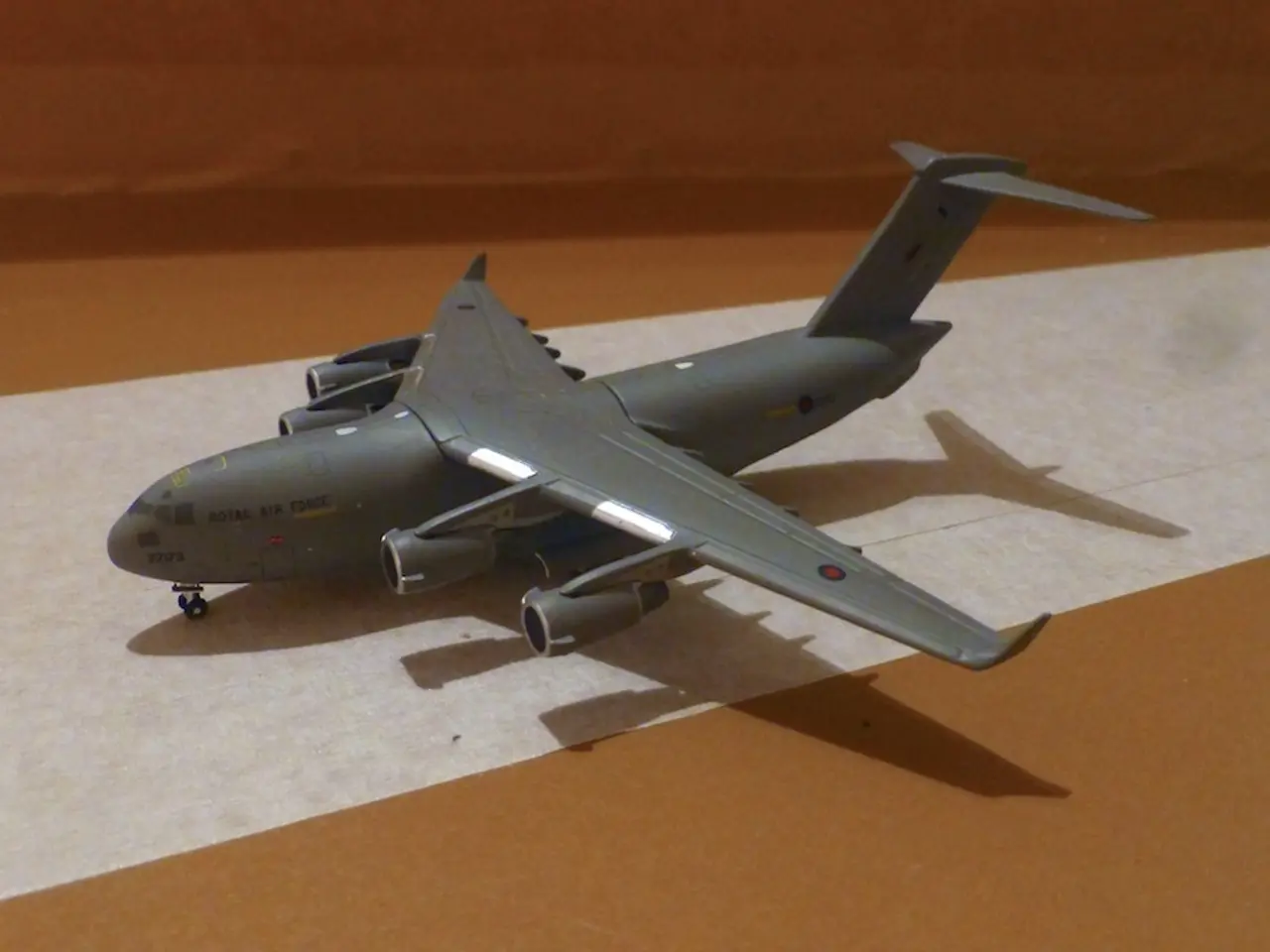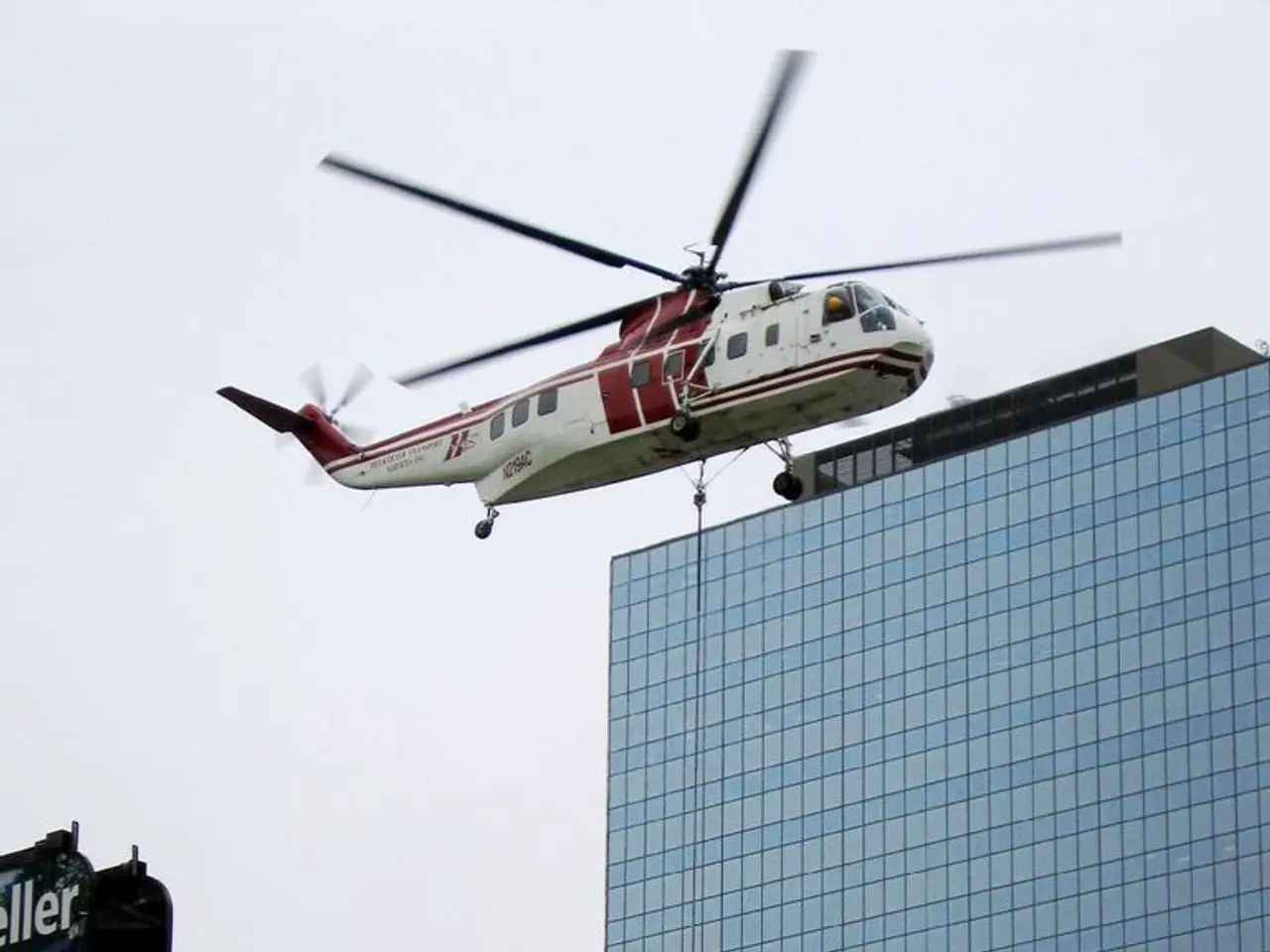Harris L3 Reveals "Wolf Pack" Plan for Budget-Friendly, Combined Kinetic/Non-Kinetic Missile Swarms
L3Harris Unveils Modular, Autonomous Wolf Pack Missile Swarms
L3Harris Technologies has introduced a new series of unmanned aerial vehicles (UAVs) called "Wolf Pack." These modular, low-cost, subsonic missile swarms are designed for collaborative autonomous operations with versatile payloads, including kinetic strikes and electronic warfare.
The Wolf Pack series boasts a range of over 200 nautical miles (370 km) at high subsonic speeds, with a ceiling around 40,000 feet. The vehicles can be configured as lethal missiles (Red Wolf) or electronic warfare platforms (Green Wolf), offering capabilities such as precision strike, jamming, target tracking, decoys, and communications relay.
Advanced software enables cooperative swarm behavior, in-flight re-targeting, and autonomous coordination for complex group tasks. The systems are designed to be relatively low-cost, relying on being seen to provoke costly enemy responses.
Initially, the Wolf Pack UAVs are intended for Marine Corps and Navy rotorcraft like the AH-1Z Cobra and Seahawk helicopters. A single AH-1Z is capable of carrying up to eight Wolf effectors, enabling mixed payload loadouts. Some platforms may be built to be recoverable depending on mission needs.
Compared to similar systems being developed or produced by Anduril Industries, Lockheed Martin, General Atomics, Zone 5 Industries, and other military services, the L3Harris Wolf Pack stands out for its combination of swarm autonomy, modular payload flexibility, and integration with existing rotorcraft platforms.
While L3Harris focuses on affordability, lethality, and electronic warfare capabilities, other players like Anduril lean heavily on AI-driven swarm autonomy, Lockheed on advanced multipurpose missile and UAV tech, and General Atomics on long-endurance UAVs for strikes and ISR.
The new munitions are part of an increasingly crowded field of one-way or recoverable missile-like vehicles. The Green Wolf munition may serve as a supplement to the Air Force's ADM-160 Miniature Air-Launched Decoy, offering a lower cost and more options for use. The Air Force may potentially use containerized versions of the Wolf Pack munitions, launched out the back of a cargo aircraft.
As the Air Force observes the Wolf Pack operating in real environments, it is likely to show "tremendous interest." The company has not yet expressed a specific interest in an Air Force requirement for the Wolf Pack, but the service is observing what the Navy/Marine Corps are doing with the system.
The company claims their versions cost around $300,000 to $400,000 per unit, while extant standoff cruise missiles cost well over $1 million apiece. L3Harris is able to accommodate customer requests for parachutes to allow recovery of some rounds for training purposes.
The Wolf Pack UAVs are set to be built in Ashburn, Va., on a modular assembly line that is now spooling up production. Similar systems are being developed or produced by Anduril Industries, Lockheed Martin, General Atomics, Zone 5 Industries, and others.
- The Pentagon's Defense Advanced Research Projects Agency (DARPA) is evaluating the potential integration of L3Harris' Wolf Pack UAVs with the proposed Space Force, aiming to expand warfare capabilities into space.
- The Air Force is showing "tremendous interest" in the L3Harris Wolf Pack UAVs, considering their potential use alongside cargo aircraft for long-range aerial missions.
- The Wolf Pack series, along with other emerging technologies like drones and advanced missile systems, has the potential to revolutionize military weapons and aircraft, shifting defense strategies towards autonomous and modular warfare.
- In the coming years, the military may rely heavily on technology-driven innovations, such as modular, low-cost, and collaborative missile swarms like the Wolf Pack, for both defense and offensive operations.
- The integration of autonomous vehicles like the Wolf Pack UAVs with existing and emerging military platforms, such as aircraft and rotorcraft, is expected to significantly enhance military capabilities in a wide variety of operational domains.
- The development and deployment of advanced missile swarms like the Wolf Pack by defense contractors like L3Harris could lead to a shift in warfare tactics, focusing on massed, coordinated attacks that leverage swarm autonomy and modular payload technologies.




